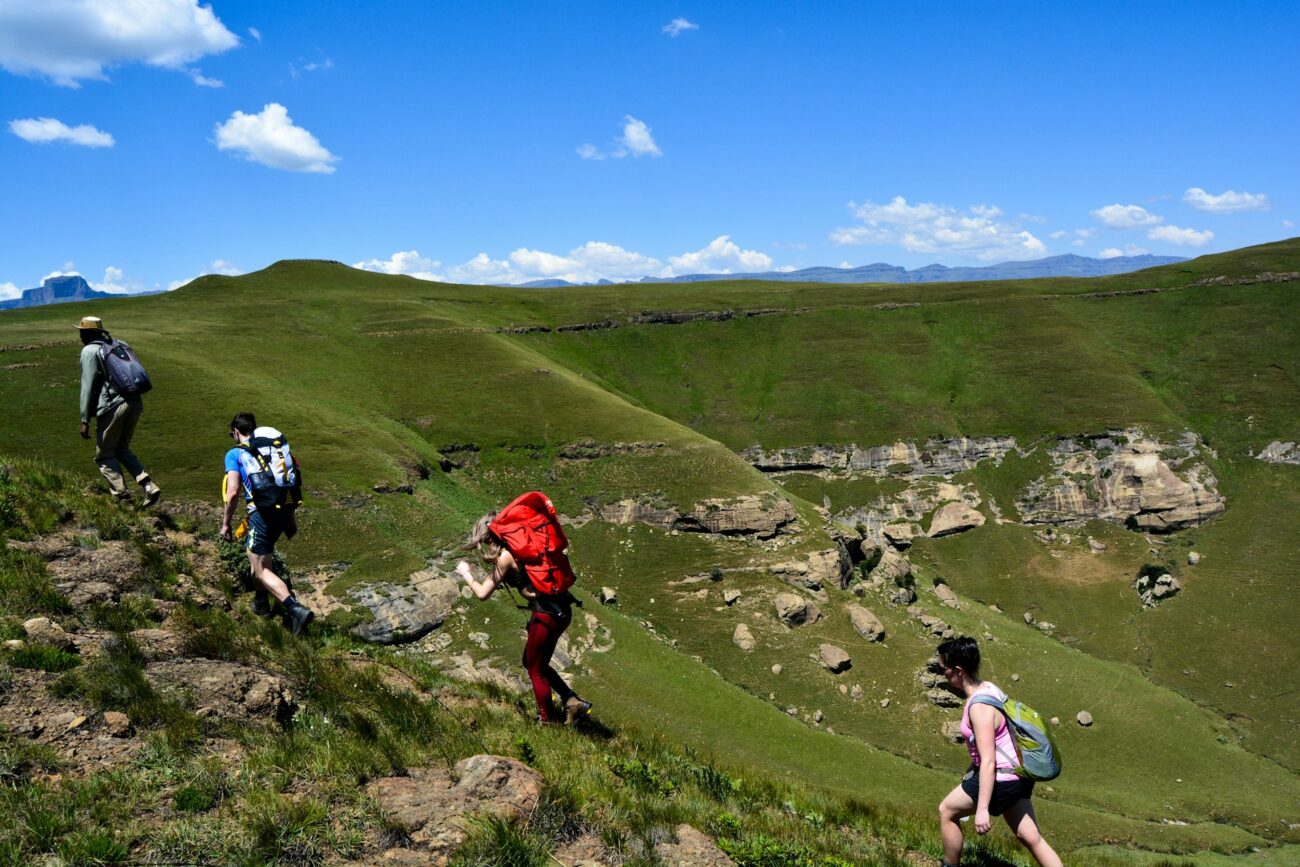When you head out to explore the great outdoors on foot, do you consider yourself a hiker, trekker, or rambler? While these terms are often used interchangeably, they actually describe distinct outdoor activities with their own unique characteristics, demands, and cultural contexts. Understanding these differences can not only expand your outdoor vocabulary but also help you better prepare for your adventures and connect with the right community of outdoor enthusiasts.
From the structured challenge of a mountain trek to the leisurely meander of a countryside ramble, these activities offer different ways to experience nature’s beauty and reap the physical and mental benefits of outdoor exploration.
The Common Ground: Walking in Nature
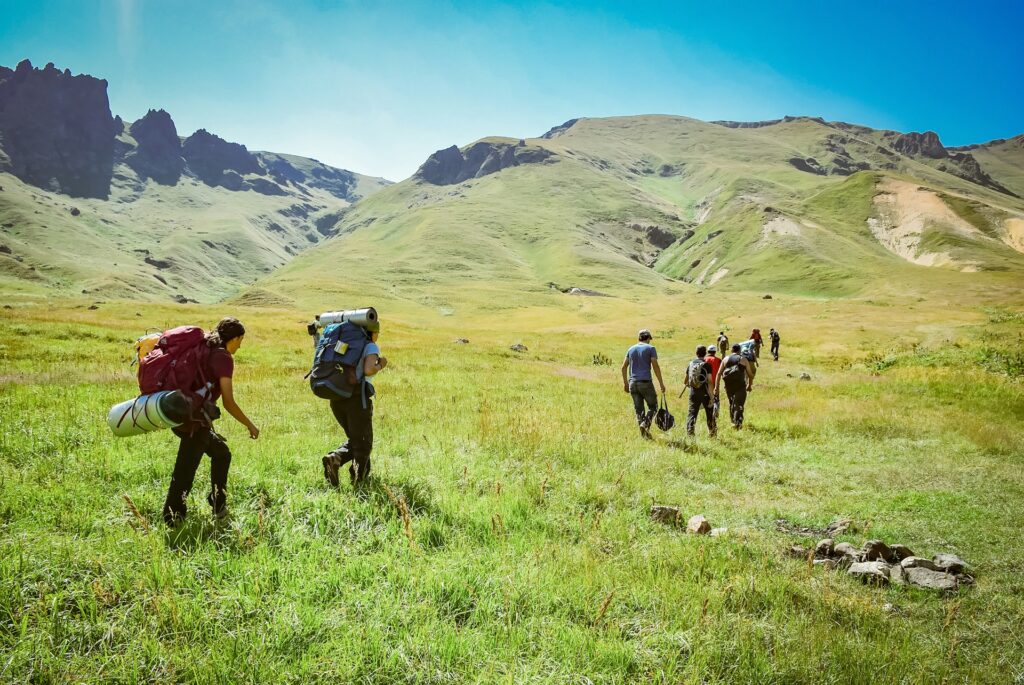
All three activities—hiking, trekking, and rambling—share the fundamental element of walking outdoors in natural settings. They all involve human-powered locomotion that allows participants to experience landscapes at a pace that permits observation, contemplation, and connection with the environment. Each activity promotes physical fitness, mental wellbeing, and an appreciation for natural surroundings, serving as an antidote to increasingly sedentary, technology-dominated lifestyles.
Additionally, all three pursuits have long histories, with humans walking for pleasure, exploration, and spiritual purposes for centuries across cultures worldwide. Despite their similarities, the activities diverge significantly in terms of intensity, equipment requirements, duration, and cultural traditions.
Hiking: The Structured Day Adventure
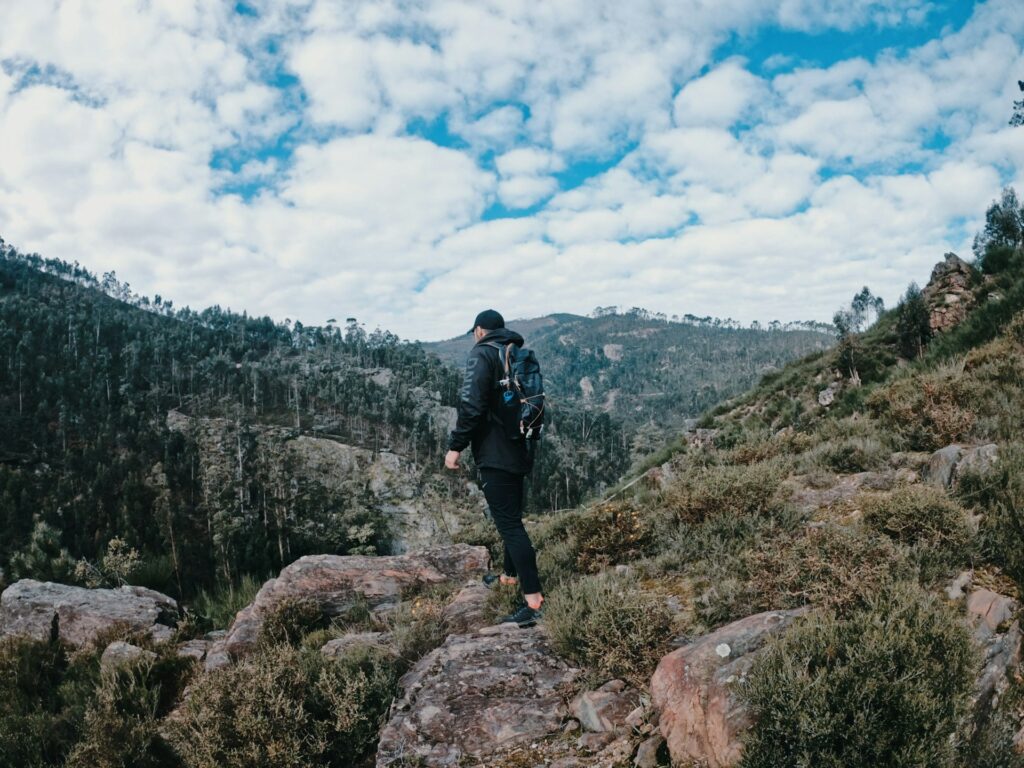
Hiking typically refers to walking on established trails or paths for recreational purposes, usually completed within a single day. The difficulty can range from easy walks on well-maintained paths to challenging climbs requiring physical fitness and basic outdoor skills. Hikers generally follow marked routes in parks, forests, mountains, or other natural areas, often with specific destinations such as summits, lakes, or viewpoints in mind.
Most hiking requires modest equipment—sturdy footwear, weather-appropriate clothing, water, snacks, and perhaps a small daypack for essentials. The activity has become increasingly popular and accessible, with trail information readily available through guidebooks, apps, and websites that provide details on distance, elevation gain, difficulty, and points of interest.
The Physical Demands of Hiking
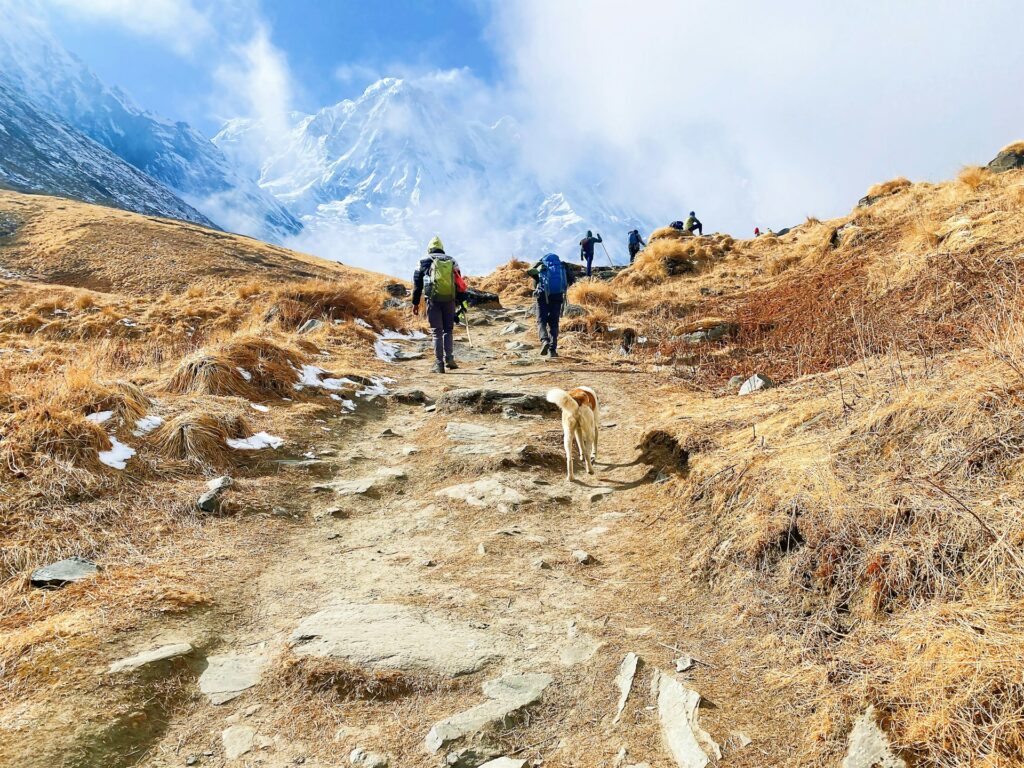
Hiking places moderate to significant demands on the body, depending on the trail difficulty, elevation changes, and environmental conditions. The activity engages multiple muscle groups, particularly the quadriceps, hamstrings, calves, and glutes, making it an excellent lower body workout. Cardiovascular fitness is also challenged and improved through hiking, especially on uphill sections or at higher altitudes where oxygen is less available.
Many hikers track their progress using metrics like distance covered, elevation gained, or specific peaks summited, creating a goal-oriented framework for their outdoor activities. While hiking can be physically demanding, the structured nature of most trails allows participants to select routes that match their fitness levels, making the activity adaptable to various abilities.
Trekking: The Multi-Day Expedition
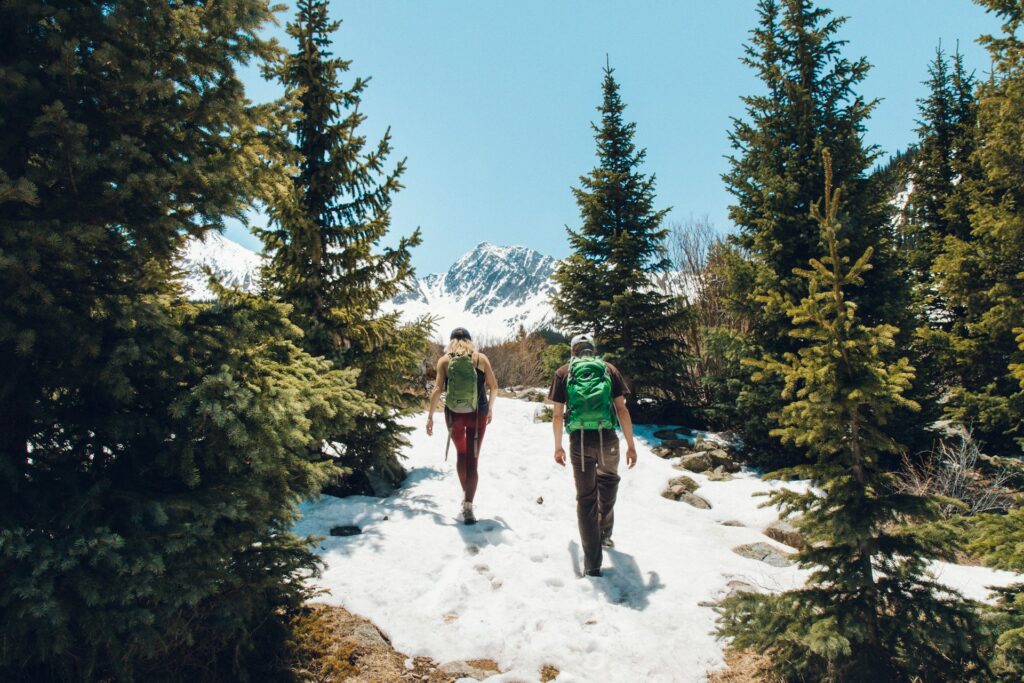
Trekking elevates the hiking experience to a more ambitious level, typically involving multi-day journeys through remote or challenging terrain. Trekkers often traverse diverse landscapes, sometimes crossing different ecological zones, mountain passes, or cultural regions in a single journey. The activity requires more extensive preparation, including route planning, accommodation arrangements (whether in mountain huts, tents, or lodges), and consideration of food supplies for extended periods away from civilization.
Trekking has deeper roots in exploration and mountaineering traditions, particularly in regions like the Himalayas, Alps, and Andes, where long-distance mountain travel has been both necessary for local cultures and attractive to adventurers. The multi-day nature of trekking creates a more immersive experience, allowing participants to witness changing landscapes and disconnect more thoroughly from everyday concerns.
Equipment and Preparation for Trekking
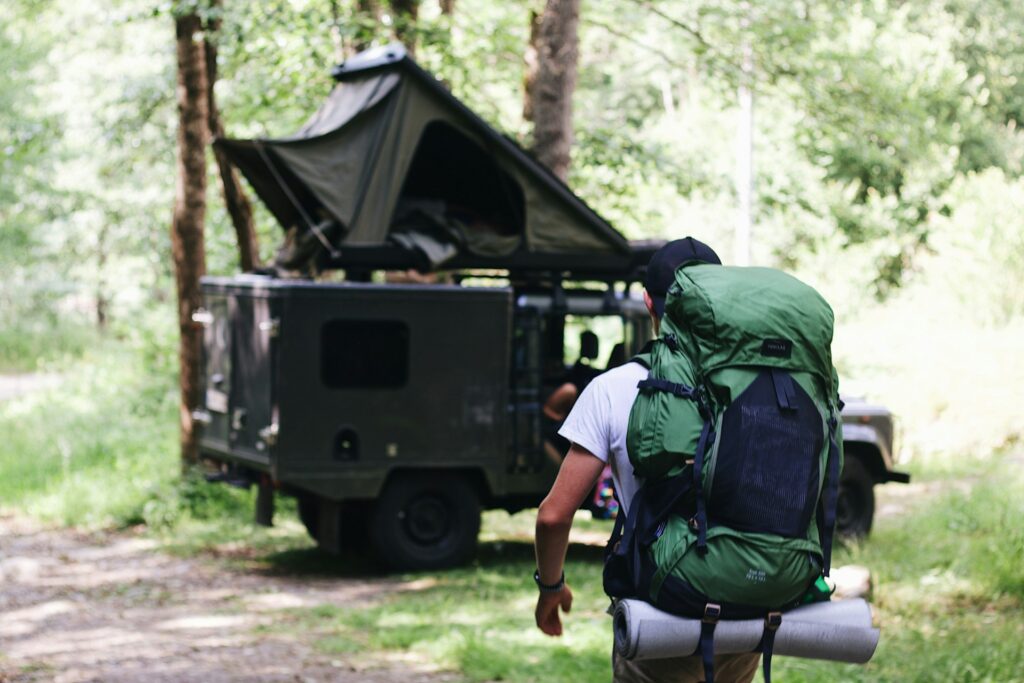
Trekking demands more comprehensive equipment and preparation than casual hiking due to its extended duration and often remote settings. Trekkers must carry sleeping gear, multiple clothing layers for changing weather conditions, cooking equipment, adequate food supplies, first aid kits, and navigation tools. The backpack itself becomes a critical piece of equipment, as comfort and proper weight distribution are essential when carrying heavy loads over multiple days.
Preparation extends beyond equipment to include physical conditioning, with many trekkers following training regimens to build endurance, strength, and acclimatization to elevation where relevant. Risk management becomes more critical in trekking, with participants needing contingency plans for weather changes, injuries, or other emergencies in areas where assistance may be hours or days away.
Cultural Aspects of Trekking
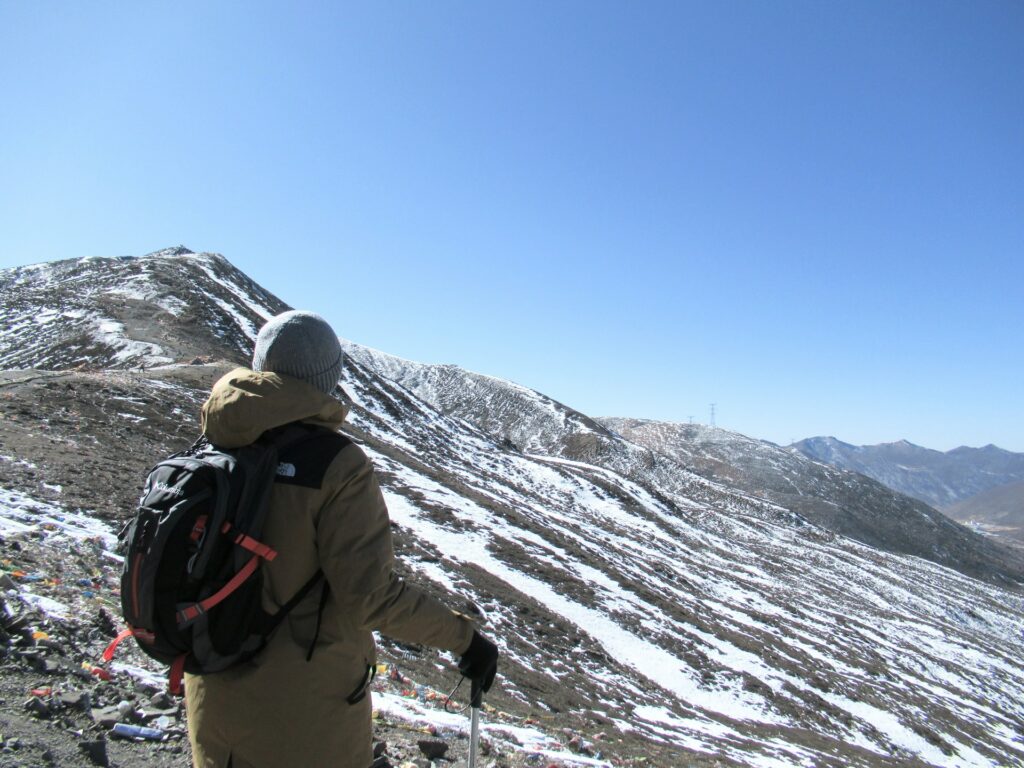
Trekking often incorporates cultural dimensions that are less prominent in day hiking, particularly in regions where routes pass through inhabited areas with distinctive traditions. In Nepal, Peru, and other popular trekking destinations, interactions with local communities form an integral part of the experience, offering insights into mountain livelihoods, traditional agriculture, and regional customs. Many classic trek routes follow ancient trade paths, pilgrimage routes, or historical passages, adding layers of human history to the natural experience.
The trekking economy has become vital for many mountain regions, creating livelihoods through guiding, portering, accommodation, and food services, though this has also raised questions about cultural impact and sustainable tourism. Responsible trekking practices increasingly emphasize cultural respect, fair treatment of local workers, and minimizing the environmental footprint of tourism in sensitive areas.
Rambling: The Art of Leisurely Wandering

Rambling represents the most relaxed and culturally specific of the three activities, particularly associated with British and European traditions of countryside walking. The term conveys a sense of unhurried exploration without rigid destinations or timetables, emphasizing the journey rather than reaching specific objectives. Ramblers typically follow public footpaths, bridleways, and rights of way that often wind through a mixture of natural landscapes and human-influenced environments like farms, villages, and historic sites.
The activity places high value on the aesthetic and contemplative aspects of walking, with participants often pausing to observe wildlife, appreciate scenery, or visit points of cultural interest along the way. The social dimension of rambling is frequently emphasized, with organized rambling clubs and associations having long histories in countries like the United Kingdom, where they have played important roles in advocating for public access to rural lands.
The Historical and Social Context of Rambling
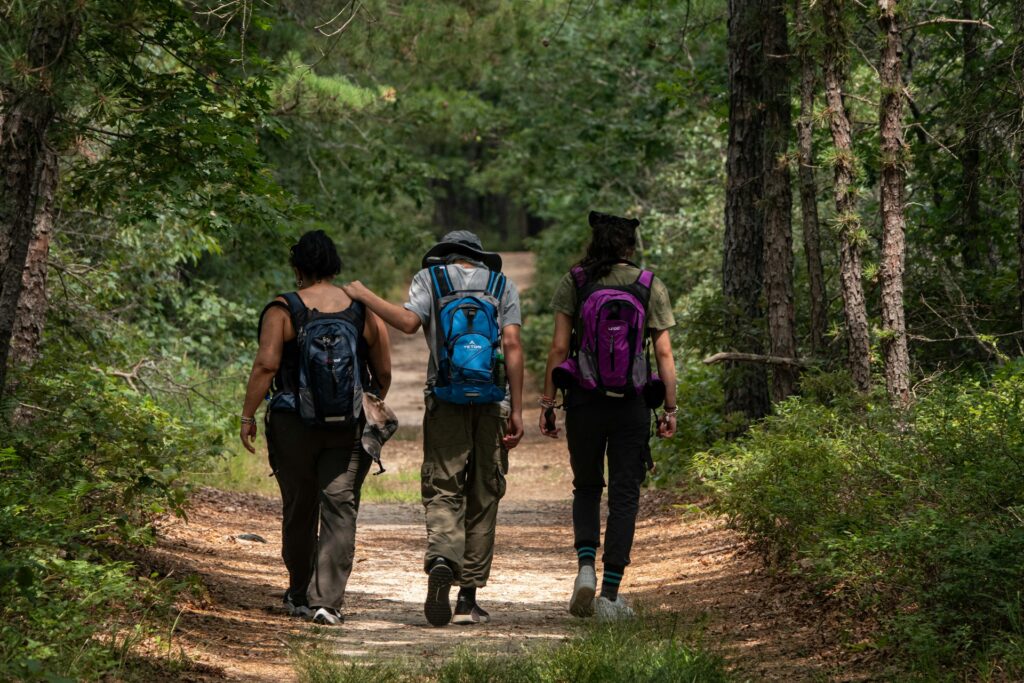
Rambling emerged as a distinct cultural practice during the Industrial Revolution, particularly in Britain, as urbanization created desire for reconnection with rural landscapes and traditions. The activity has strong associations with social movements advocating for public access to land, exemplified by the famous “mass trespass” of Kinder Scout in England’s Peak District in 1932, which helped establish the principle that natural landscapes should be accessible to all citizens regardless of land ownership.
Rambling clubs and societies have fostered community connections for generations, with organized group walks providing social opportunities alongside physical activity and nature appreciation. These organizations have also historically played important roles in mapping, maintaining, and protecting walking routes and public rights of way, serving as early examples of recreational advocacy and environmental stewardship.
Equipment and Approach to Rambling
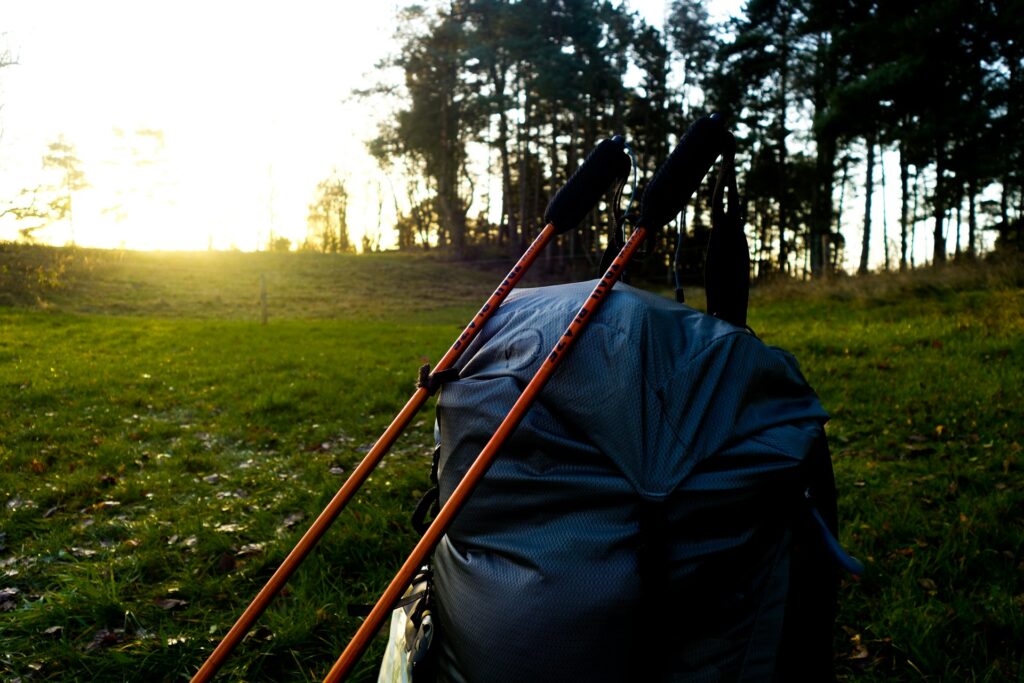
Rambling generally requires minimal specialized equipment, emphasizing comfortable footwear, appropriate clothing for changing weather, and perhaps a walking stick or trekking poles for stability. Many ramblers carry modest provisions like water, simple food, a map of local pathways, and perhaps a field guide for identifying plants, birds, or historical features encountered along the way. The approach to rambling typically prioritizes enjoyment over athletic achievement, with distance and pace determined by pleasure rather than predetermined goals.
Traditional rambling culture often incorporates stops at countryside pubs, tea shops, or picnic spots, integrating refreshment and social interaction into the walking experience. The accessibility of rambling makes it particularly suitable for those seeking gentle exercise, social connection, and cultural appreciation rather than physical challenges or wilderness experiences.
Environmental Impact and Ethics
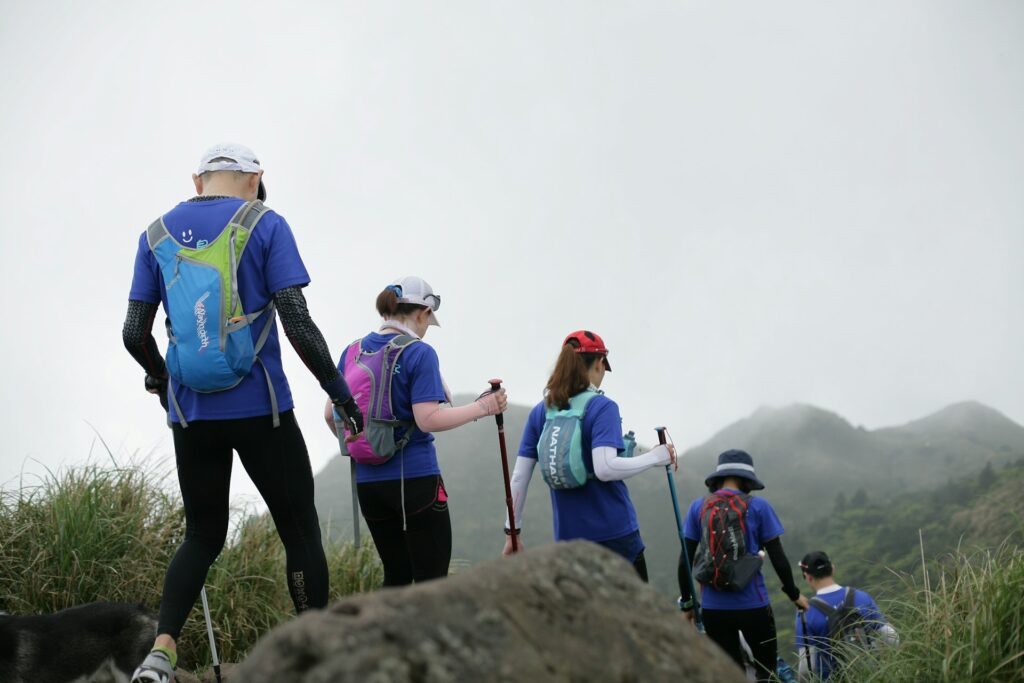
All three activities—hiking, trekking, and rambling—raise important questions about environmental impact and ethical engagement with natural spaces. The growing popularity of outdoor recreation has led to concerns about trail erosion, habitat disruption, waste management, and overcrowding in popular destinations. Leave No Trace principles have become essential guidelines across all forms of nature walking, emphasizing responsible waste disposal, minimal disruption to wildlife, and respect for natural and cultural resources.
Different activities present distinct environmental challenges: day hiking concentrates impact on popular trails, trekking brings human presence into remote areas, and rambling raises questions about balancing recreation with agricultural and conservation priorities in multi-use landscapes. Sustainable practices across all three activities increasingly emphasize staying on established paths, proper waste management, respect for wildlife, and consideration of carrying capacity in fragile environments.
Physical and Mental Health Benefits
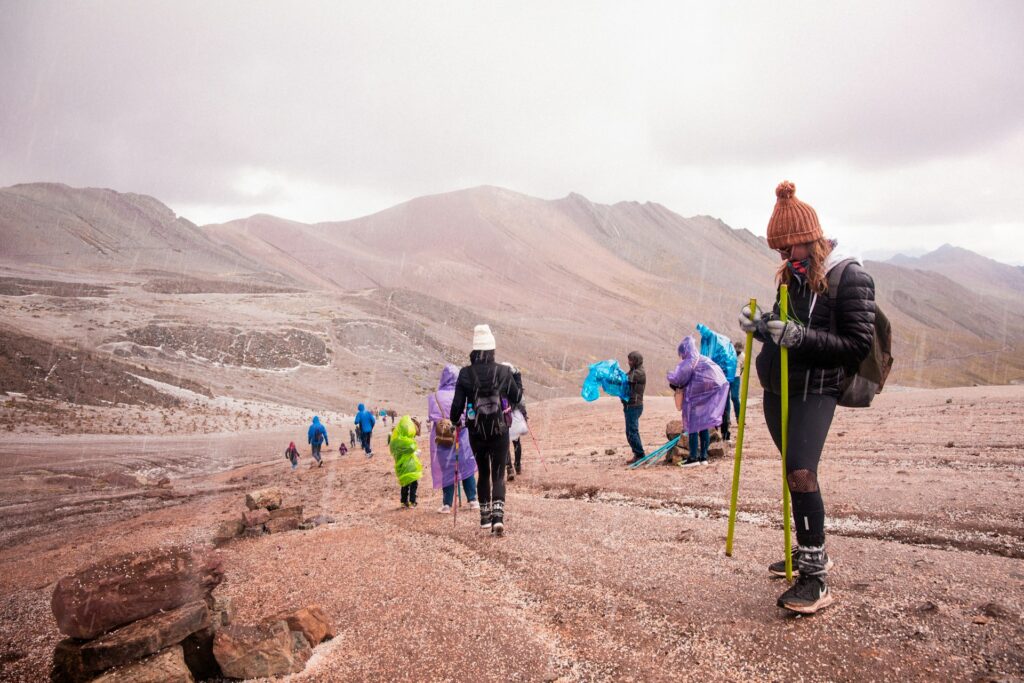
Whether hiking, trekking, or rambling, walking in nature offers profound benefits for physical and mental wellbeing that have been increasingly validated by scientific research. Regular participation in these activities supports cardiovascular health, weight management, muscular strength, and balance, providing exercise that is sustainable throughout life with proper adaptation for changing abilities. The mental health benefits are equally significant, with nature exposure consistently linked to reduced stress hormones, improved mood, enhanced creativity, and better cognitive function.
These activities offer rare opportunities in modern life to disconnect from digital devices and constant connectivity, providing space for mindfulness, contemplation, and present-moment awareness. For many participants, the combination of physical movement, natural beauty, fresh air, and either solitude or meaningful social connection creates a powerful antidote to the pressures and constraints of contemporary life.
Choosing the Right Activity for You
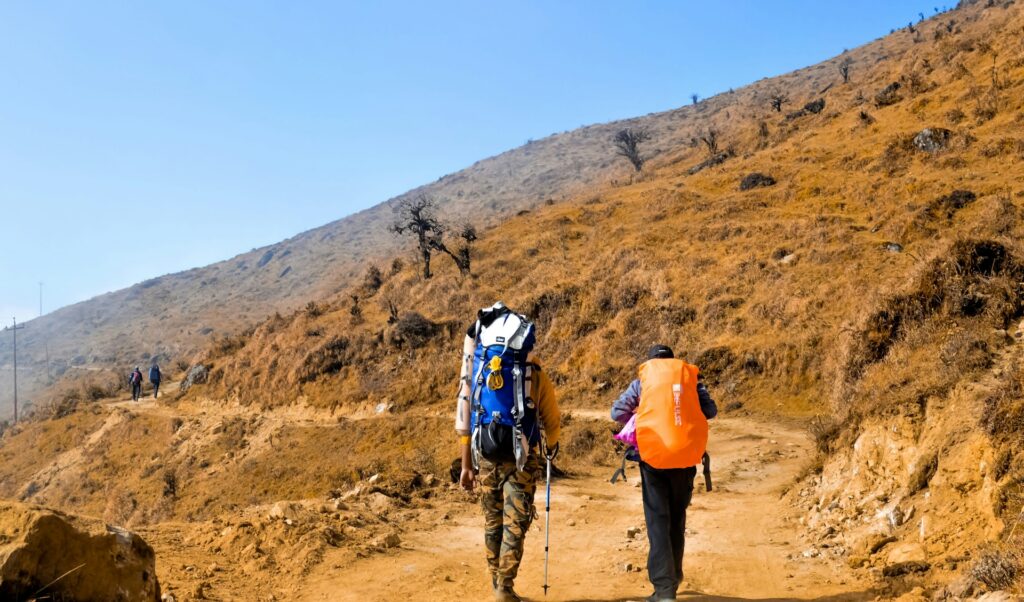
Selecting between hiking, trekking, and rambling depends on personal preferences, physical condition, available time, and desired experience. Hiking offers a good balance of accessibility and challenge, making it ideal for those with limited time who still want meaningful nature experiences and moderate physical exertion. Trekking appeals to those seeking deeper immersion, physical challenge, and more profound disconnection from everyday life, but requires greater commitment of time, preparation, and resources.
Rambling suits those who prioritize leisurely exploration, cultural appreciation, and social connection over physical challenge or wilderness experience. Many outdoor enthusiasts enjoy all three activities at different times, adapting their choice to current fitness levels, available time, travel opportunities, and companionship. The distinctions between these activities should be seen not as rigid categories but as helpful guidelines for matching outdoor experiences to personal circumstances and aspirations.
Embracing the Spirit of Outdoor Exploration
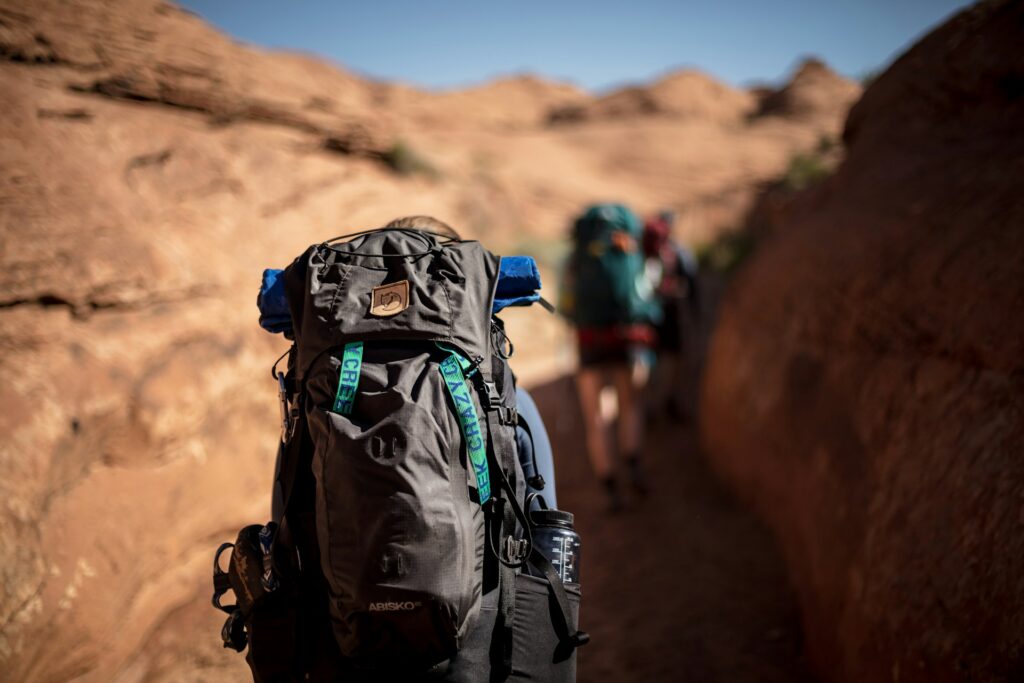
Beyond the technical distinctions between hiking, trekking, and rambling lies a shared spirit of curiosity, appreciation, and connection with the natural world. Each activity, in its own way, helps participants slow down, observe their surroundings with greater attention, and experience landscapes through multiple senses rather than through screens or windows. Whether following a challenging mountain trail, embarking on a multi-week trek, or meandering along countryside paths, these foot-powered journeys connect us to ancient human traditions of exploration and to the landscapes that have shaped cultures worldwide.
The popularity of these activities continues to grow as their benefits become more widely recognized and as people seek authentic experiences in an increasingly virtual world. Whatever term you prefer for your outdoor walks, the essential value lies in stepping outside, moving through natural spaces at human pace, and rediscovering our place within the wider natural world.
Conclusion
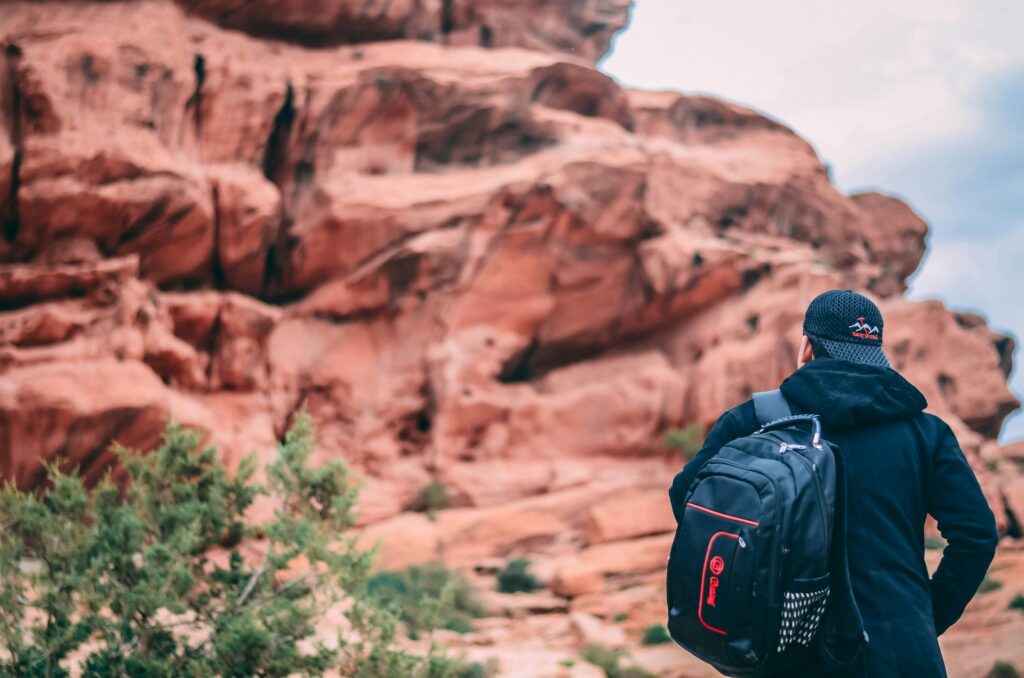
In conclusion, while hiking, trekking, and rambling all involve walking in natural settings, they represent distinct approaches to outdoor exploration with their own traditions, requirements, and cultural contexts. Hiking offers structured day adventures on established trails, trekking provides immersive multi-day journeys through challenging terrain, and rambling embraces leisurely wandering with cultural and social dimensions. Understanding these differences allows outdoor enthusiasts to better prepare for their chosen activities and connect with like-minded communities.
Whatever form of nature walking appeals to you, the fundamental benefits remain consistent: physical wellbeing, mental restoration, and meaningful connection with the natural world. As our lives become increasingly urban and digitally mediated, these foot-powered journeys through natural landscapes offer valuable counterbalance and reconnection to both our environment and ourselves.

